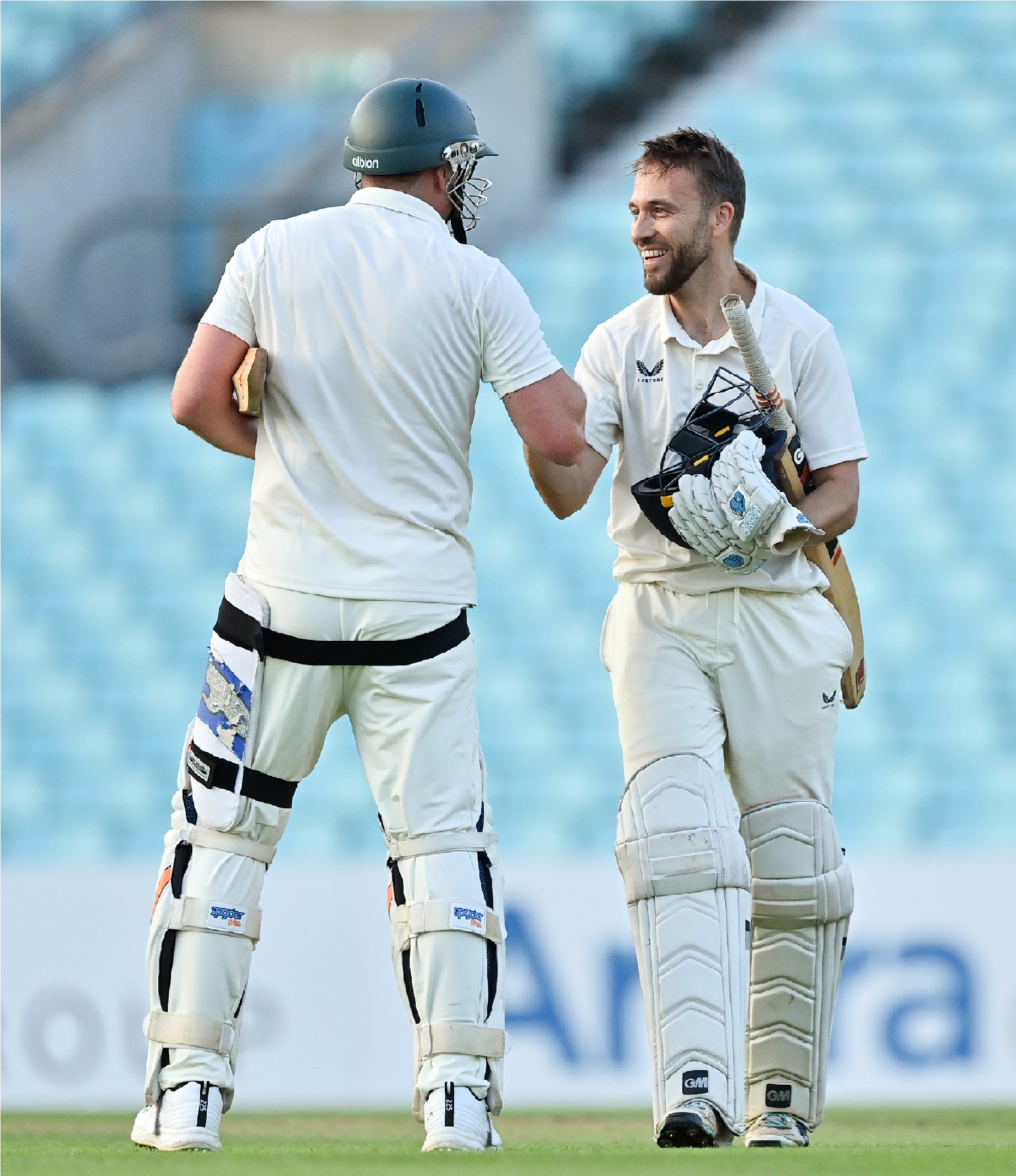Cricket can feel like a tough sport to get into, especially if you’re a newbie. If you’re looking for a good place to start, this is the guide for you!
An Introduction To Cricket: The Gentlemen’s Game
Cricket is by far one of the most popular sports in the world. Not only is it the national sport of England (something that may surprise a few fellow football fans out there), it’s one of the most common national sports in the world. And if it’s not ‘the’ national sport, then it’s definitely one of the big ones!
Thanks in part to its widespread popularity, as well as a whole range of international sporting events throughout the year (Ashes 2024 in September anyone?), there are newcomers to this classic sport all the time.
However, if you find that this sport is a little overwhelming to learn, don’t worry. This guide will be the perfect place to start learning!
How A Cricket Game Works
If you’re someone who’s already a little familiar with cricket, then feel free to skip ahead to our sections on ‘Key Cricket Terms’ for more in-depth knowledge.
However, if you’re someone who’s completely new to the sport, then allow us to fill you in on the basics!
- The goal of a cricket game is to score more points (or ‘runs’) than your opposing team.
- Points can be scored during each team’s turn to bat (called an ‘Inning’).
- The opposing (fielding) team can stop them from getting points by bowling batters out (See our Rules section here or our piece on how cricket scoring works)
- Each team usually has around 11 players on the pitch at any time, but this can change, depending on the level of play, or the format/style of cricket you’re playing. Don’t let having 5 mates on each team stop you from heading to your nearest field!
- (For more information on cricket formats, check out our guide to cricket divisions/formats)
- The cricket team captain is also a player of the team. They are responsible for most of the bigger strategies that the team will use during the match.
- For the batting side, team captains may choose to decide what order their players bat in.
- For the fielding side, captains will decide where players should stay on the field, and adjust positions as the match goes on.
Key Cricket Positions
Like any team sport, there are quite a few positions to fill on a cricket pitch. These are some of the most important that beginners need to know:
- Players — Just like in any other game, players are the main focus of a cricket match. Depending on which team’s over it is, players will fill one of two roles:
- Batters, who score runs by, you guessed it, striking the ball.
- Fielders, whose objective is to stop batters from getting runs by bowling/running them out.
- Captains — (which we’ve already covered).
- Teams can also have Vice-Captains, if a main captain becomes incapacitated or cannot play on match day.
- Umpires — They make the final calls on most decisions on the field, including illegal bowls/fouls, among other duties. Players arguing with official umpires in ICC matches are often banned/fined. Their word is final!
- Official ICC games will involve two field umpires for on-the-pitch observation, a TV Umpire if disputes need video confirmation, and a reserve umpire.
Basic Rules
Starting the Game
Every game has to start somewhere, after all!
Cricket matches traditionally start with a coin flip between the two team captains. The winning captain then gets to choose whether they bat or field first.
Scoring Points
We’ve actually covered the rules for scoring points in more detail in its own dedicated guide. Still, if you're just here for the main points, these are the highlights.
It’s important to remember that only the batting team can increase their team's score in an over. The main way this can be done is by scoring runs, which we’ve already touched on at the beginning.
A run is simple to get. All a player has to do is make it to the opposite side of the main pitch, without being dismissed, whether that’s by a run/bowl out, or other means (check out our guide for more details).
So long as one part of your bat or body (within guidelines) touches the opposite side, the batsman gets a point. However, if they can stroke the ball outside the field boundary, then they can score either a ‘Four’ or ‘Six.
- Four - If the ball makes it to the boundary after bouncing once, the player scores 4 runs instead of 1.
- Six - If the ball makes it past the boundary without bouncing, the player will score 6 runs.
Ending An Inning
So, now that we know how batters score, how do fielders stop them from racking up runs? Well, by ending their Over!
We’ve already mentioned how an Inning is a cricket team’s turn to bat, but we haven’t yet talked about how they switch from one team’s Inning to the other’s.
There are normally 2 ways that an Inning can end:
- There must always be 2 batters on each side of the cricket pitch, bowling out all but 1 of the batsmen will cause an Inning to end.
- In traditional 11 vs. 11-player cricket, this means 10 of 11 players will be bowled out.
- If the batting team has accumulated a high amount of runs, then a team captain can call for the Inning to end
If you’re the current fielding team, you really want to be aiming for the first method. After all, if the opposing team captain is that confident that they have enough, nobody wants to try to close a gap THAT big!
There is technically a 3rd way to end an inning:
- Once a set number of Overs (6 legal bowls from a bowler) has been done.
- This is restricted to limited or shorter-form cricket formats, such as single/two-innings games.
Ending A Match
So, when does a cricket match officially end?
Annoyingly (at least for newbies), that really depends on the type of cricket match.
- If the cricket match was in a shorter format, then the total number of runs is counted after each side has completed their innings.
- Formats that use this method include T20 and One-Day Internationals (ODIs)
- In longer matches, cricket runs from a team’s different innings are added and tallied, then compared to each other.
- Longer formats include classic Test matches, where teams will have 2 battings Innings each, and take place over 5 days.
Key Cricket Terms
Just like in any other sport, cricket is full of its own unique terms. If you read our last section, you’ve already seen a few, like ‘Innings’ and ‘Runs’.
A lot of them can be overwhelming for newcomers and fans of this sport. So let’s break down some key ones for you here.
- Bowl/Run Out — One of the main ways of dismissing a batter. Either by bowling a ball and knocking the wickets over (bowl out), or returning the ball to a wicket before the batsmen have got to the safe zone (or ‘Crease Line’) (run out).
- Stumps — Three upright sticks played at each end of the cricket strip. Batters will stand in front of them while batting.
- Bails — These are the two small sticks that you’ll see laying horizontally across a wicket’s stumps. The bowler must knock at least one of these off to bowl out a batter.
- Wicket — This usually refers to the stumps that the bails are placed on, but it can mean a few different things in other contexts:
- The bowling and batting area of a cricket pitch.
- When a batsman is dismissed by being bowled out, this can be called ‘taking a wicket’.
- Boundary — The furthest point away from the central strip. Hitting a cricket ball beyond the boundary can score batters a Four or Six.
- Extra — A run/point that is awarded to batters outside normal runs. These are given out by Umpires, and usually only awarded after illegal/incorrect conduct has been observed.
- Overthrow — Also known as a ‘buzzer’, they are an additional run that is scored by a batter if a ball is not collected in the centre of the pitch. These tend to happen if a ball has been thrown in from the outfield, and no fielder caught or picked it up.
- Leg Before Wicket (LBW) — A type of batter dismissal. This refers to a legal/correct bowl from a bowler that would normally hit the wicket stumps, but was blocked by the batter’s leg.
- No Ball — An illegal/incorrect delivery/bowl of the ball, or when a bowler’s back foot touches the wide side of the return crease. A no-ball also results in a run being given to the batsman.
- Wide Ball — A type of No-ball, where the delivered cricket ball is considered too wide or high for a batter to hit.
- Strike Rate — The number of runs a batsman scores per 100 balls. It’s used as a measuring point for some batter's overall skill level.
- Similarly, Bowling Strike Rates are how many wickets a bowler can score in a set number of bowls.
- Leg-Side — The side of the field on the batsman’s right side (or the bowler’s left).
- Off-side — The side of the field on the batter’s left (or bowler’s right).
Final Notes
So, as you can see, there’s a lot to take in if you’re new to this particular sport. Lots of different rules to keep track of, and A LOT of new phrases and terms to pick up on.
However, that’s kind of the appeal of cricket, isn’t it? It’s a game that has a ruling on pretty much any scenario you can think of, that can be picked up by anyone with the know-how or passion to learn.
All you need is a list of rules (and some balls and bats, obviously), and anyone can not just learn to play it, but play it well.
Small wonder that cricket is often called ‘The Gentlemen’s Sport’!
If you’ve found this guide helpful, and want to learn more, then make sure to check out our other guides that cover other aspects of cricket in more detail.
Related guides
Best adidas Football Kits by Colour
Summer 2020 Match Kit Guide: adidas








